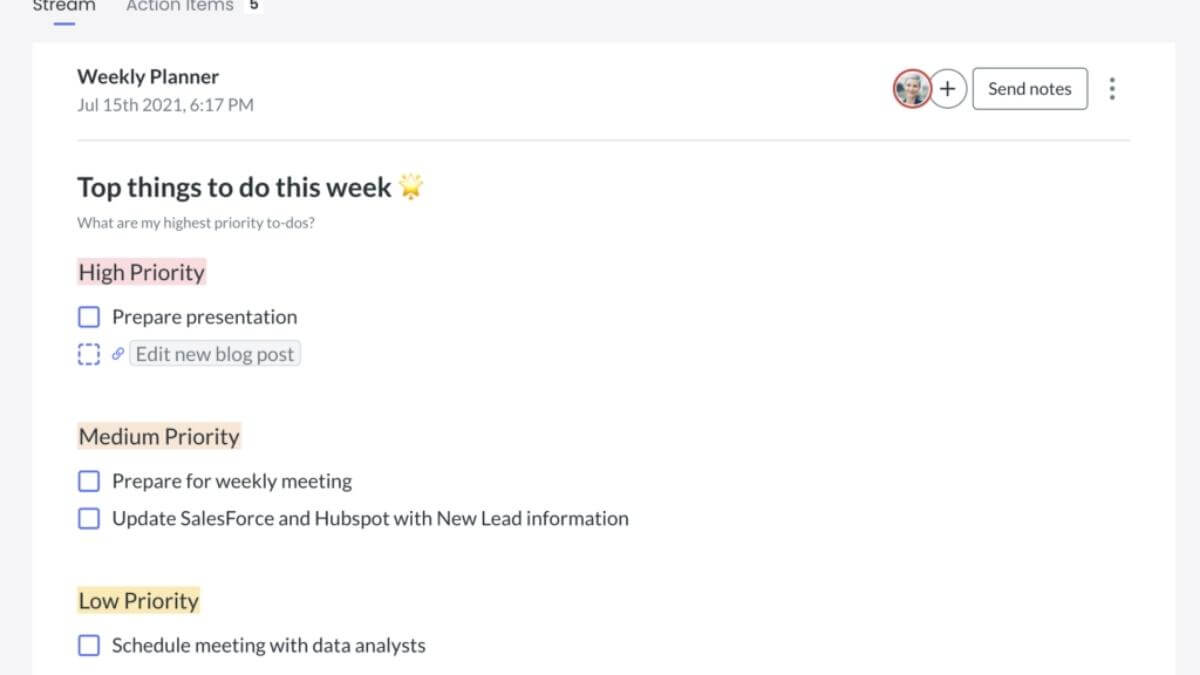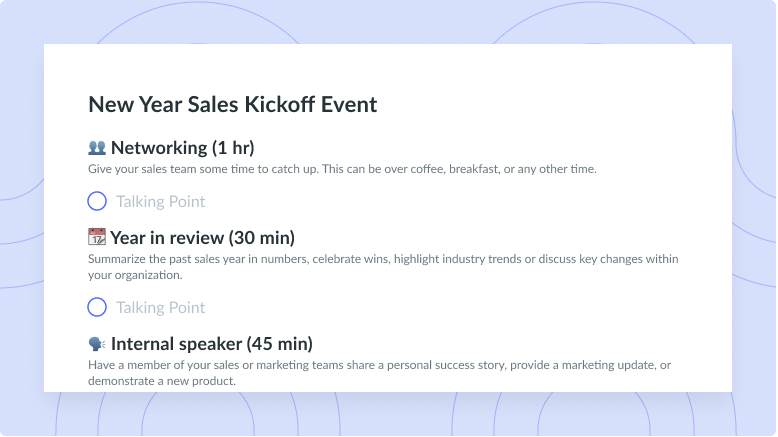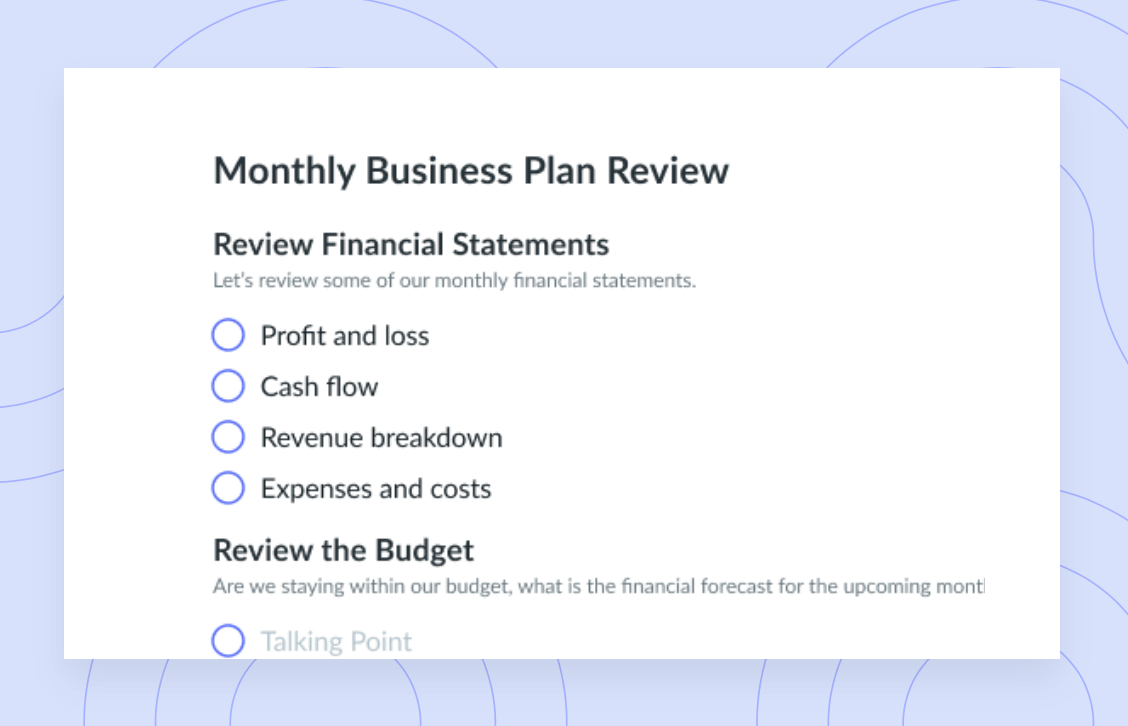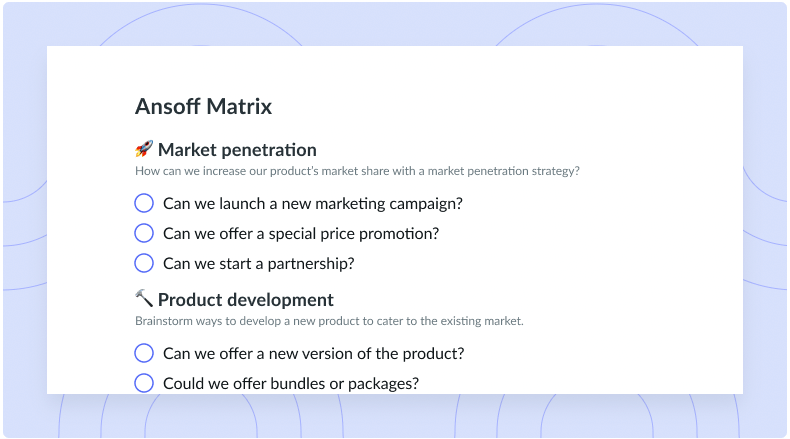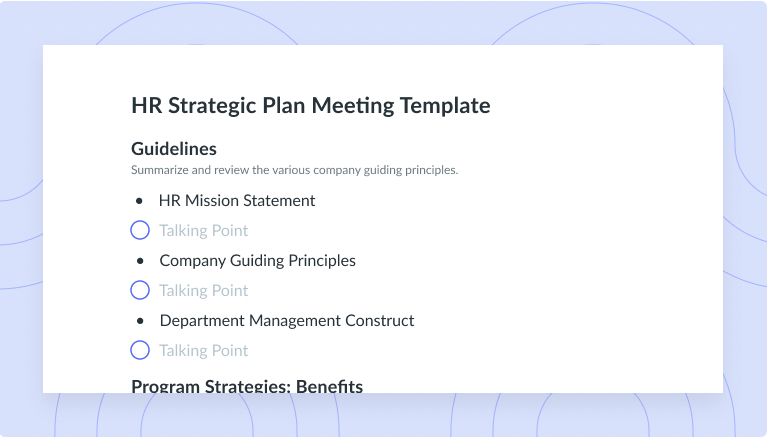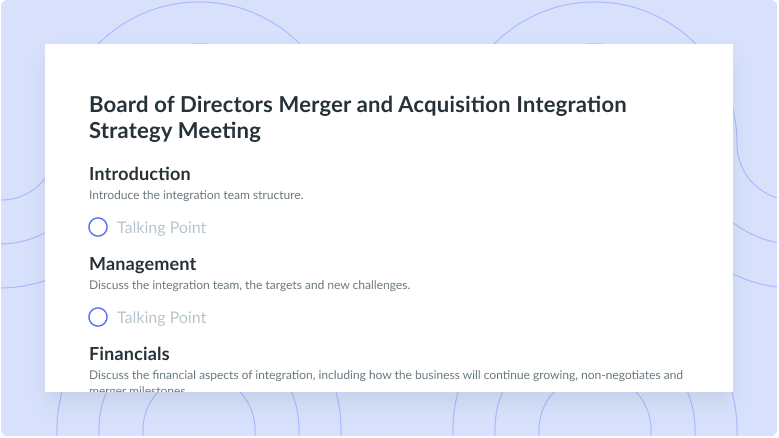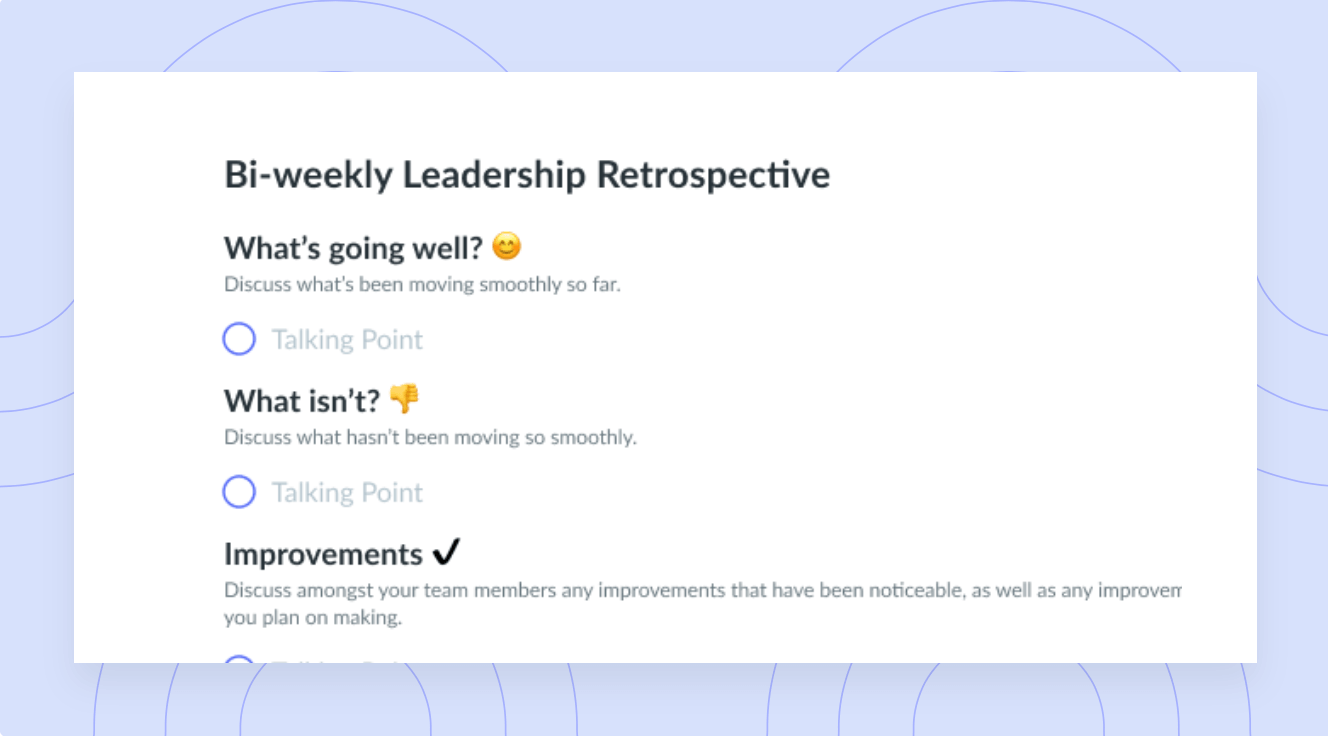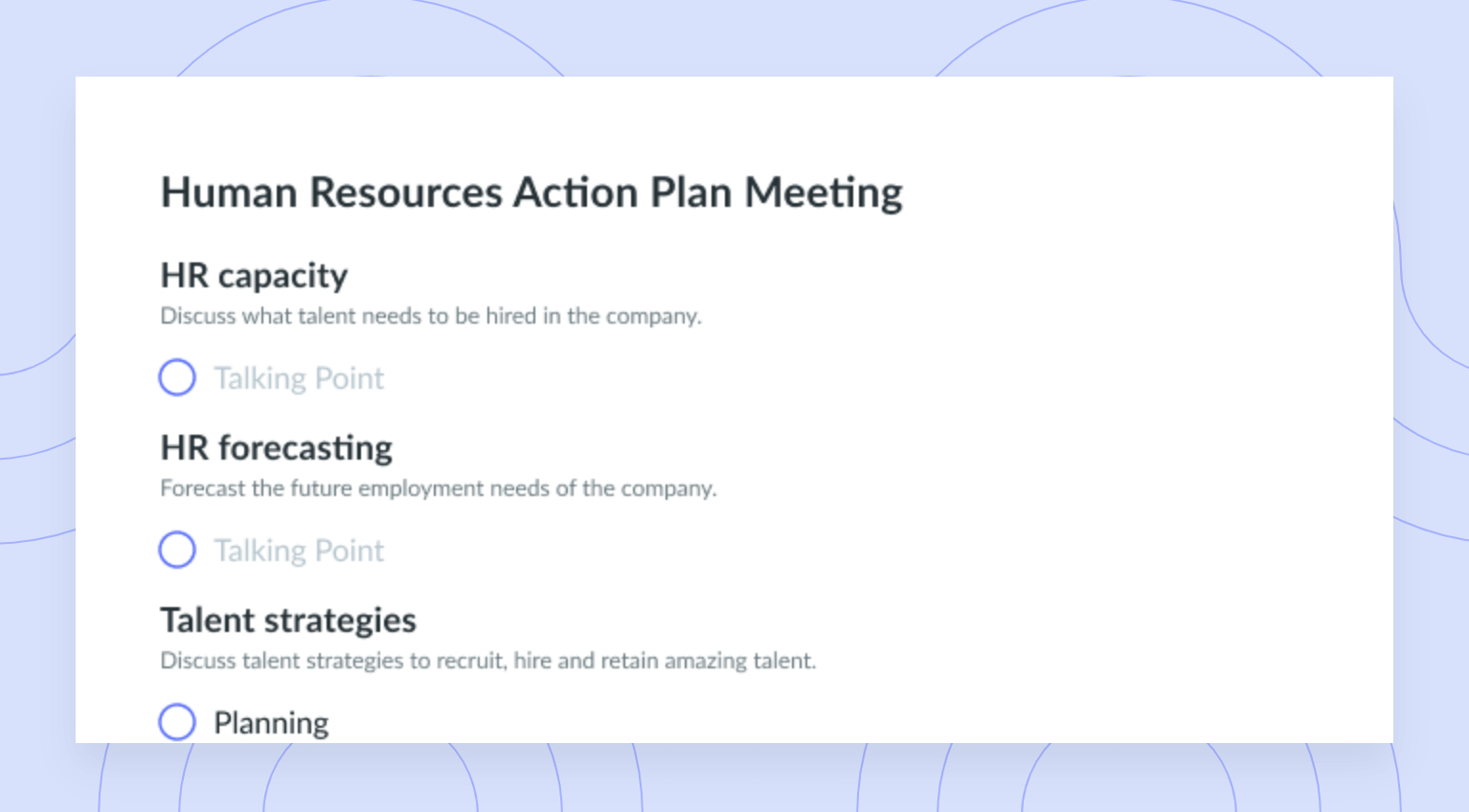Guide to Developing an Internal Communication Plan
Good communication keeps everything running smoothly. Get tips and tricks on creating an internal communications plan here!
Once upon a time, communicating with employees was as simple as visiting their cubicles or calling them up on the phone. Both are still an option, of course, but you also have to account for team members working from the comfort of their homes. Keeping them in the loop requires an especially effective internal communication strategy. Read on for a few tips and tricks for creating your own internal communication plan.
- What is an internal communication plan?
- Internal communication strategy vs. internal communication plan
- Why do organizations need internal communication strategies?
- 8 examples of internal communication strategies
- How to measure the success of your internal communication plan
- 5 Internal communications plan best practices
What is an internal communication plan?
An internal communications plan is your strategy for keeping everyone in touch on the regular across all levels of your organization. This helps keep everyone on the same page about your business goals and brings modern tools into the picture to keep remote team members engaged.

Managing a team?
Take control of your team meetings by having collaborative meeting notes and encouraging accountability with action items. Try a tool like Fellow!

Internal communication strategy vs. internal communication plan
Typically, you’ll create your strategy first – it’s what you use to work toward your broader, long-term communication goals. This sets you up with a few short-term internal comms goals for reaching your ultimate objective. Your internal communication plan is your blueprint for achieving your goals.
Why do organizations need internal communication strategies?
Internal communication strategies are essential to any organization – so essential, in fact, that it’s quickly obvious when there are none to be found. It’s sort of like having city streets without any street lights or signs. No one’s sure where they are or where they’re going, and nothing stops them from crashing into other teams.
A strategy with clear communication channels can guide your flow of information and help everyone do their work as efficiently as possible. Below are a few reasons why you should get your internal comms in check.
- Organize and streamline communication flow
- Employee engagement
- Organization branding
- Employer-employee communication
1Organize and streamline communication flow
A consistent, reliable flow of information throughout your organization is the bread and butter of success. It keeps everyone on task and working toward their goals.
2Employee engagement
Managing a virtual team can be tons of fun, but it’s not without its challenges. Namely, it can be tough to check in on people who aren’t in the same room as you. Keeping remote team members engaged in the workplace becomes much easier, though, with an effective internal communication plan.
3Organization branding
Strong highways of information can help you reinforce your company culture and values. That’s because your internal communication plans are how you’ll first share your values with your team. From there, your team can communicate your internal work environment to the public.
4Employer-employee communication
Important information from management and leadership should trickle down to all your teams without issue. Without that, people could be working with outdated information rather than moving forward with your organization.
7 examples of internal communication strategies
The internal communication strategy you land on usually depends on what your organization needs to reach its goals. You can start with any of the below.
- Use daily internal comms instead of email
- Try using more pictures
- Start an internal newsletter
- Develop an organization-wide app or mobile forum
- Send out internal surveys
- Build rapport with your team
- Measure the success of your internal communication plan
1Use daily internal comms instead of email
As convenient as email is, most inboxes have become something of a dumping ground for spam and promotions. You don’t want essential messages lost between marketing emails, so try switching to other team communication tools. Something IM-based like Slack might be your best bet.
2Try using more pictures
Words can start blurring together if you have to read a lot within a short period, and for many teams, that’s their every day. To help make sure your team members don’t miss vital information, try including infographics with your messages. This can help keep your text from feeling super dense, and it’s just a fun way to switch things up every once in a while.
3Start an internal newsletter
When every department is focused on its own thing, the team can lose sight of the rest of the organization. Newsletters can help keep everyone in the know about the overall business so that everyone stays in the know.
4Develop an organization-wide app or mobile forum
It’s a safe bet that most team members will look at their phones at least once during the day. Why not use that to your advantage? An organization-wide app or mobile forum can keep your team informed about what’s going on at work.
5Send out internal surveys
The best communication isn’t a one-way street – it’s a dialogue between you and your team. Your team will often have great insights into what’s working and what isn’t, so listen to what they have to say. Internal surveys can be a great way to get these insights, and Fellow’s feedback tool is a great way to run them.
6Build rapport with your team
Building rapport is always worth the effort, even if your team is so big this just doesn’t seem possible (hint: it is). When team members feel like more than a cog in the machine, they’re typically more willing to engage with whatever you put on their plate.
7Measure the success of your internal communication plan
The work’s not done after you’ve finished implementing your internal communications strategy. You still have to make sure it’s working. There are plenty of ways to do that. Surveying your team might be the easiest, but there are other options too.
How to measure the success of your internal communication plan
You can use a few metrics to figure out how your new communication guidelines are helping or hurting your team, but first, you have to know what they mean. Here’s a breakdown of exactly that.
- Message open rates
- Employee app downloads
- Login sessions and session duration
- Employee turnover rates
- Employee feedback
1Message open rates
This measures the number of people who open your internal emails. It can help you figure out whether an email newsletter is really your best bet for internal communication. High open rates suggest it is, and low rates suggest it’s time for a change.
Email read receipts can help here too. Usually, you’ll see them as an extra button at the end of an email. If you click it, the recipient will have to click something on their end to say they got your message.
2Employee app downloads
This measures how many people have downloaded and engaged with your internal communications app. Low marks here could mean there was a problem introducing the app to your team. High marks mean you’ve done your job.
3Login sessions and session duration
This measures when your team logs into the company app or forum and how long they spend interacting with it. If you need to find out which of your channels in there is the most popular, this is a simple way to do it. Plus, knowing when people typically log onto your sites can give you a better idea of when to send organization-wide announcements.
4Employee turnover rates
Good use of internal communication tools can help your team feel more engaged with their work. People who connect with their workplace are usually less likely to leave it. You can typically assume low turnover rates (how often team members leave for other organizations) signal a great internal communication plan.
5Employee feedback
One of the best ways to know whether your communication plan is working is just by asking outright. Your plan is meant to help your team members, so they’ll typically have the most insight on whether it’s actually doing that.
Pro tip: Fellow makes it easy to ask for feedback about meetings and projects, and respond both on the web and through Slack.

5 Internal communications plan best practices
Below is a list of best practices that can help you get started with your internal communication plan.
- Treat your teams like human beings
- Build trust in your senior leaders
- Know when to change your approach
- Don’t make your plan too complex
- Make communication a team effort
1Treat your teams like human beings
Your team members are key to your organization’s reputation and brand. Poor communication alone won’t make you look worse, but if it starts making people miserable, customers might hear about it. Those customers might be less likely to stick around.
2Build trust in your senior leaders
Smoothing over any tension or distance between management or leadership and the rest of the team is a great starting point for internal communication. It’s how you build trust and create a healthy dialogue from top to bottom. A team that trusts the higher-ups is more likely to communicate with them, which means the reverse will likely happen too.
3Know when to change your approach
A strategy not going off without a hitch isn’t anything new, and it’s not a reason to give up either. All you have to do is learn from what went wrong and change your approach until something sticks.
You’ll know something is up if your team members are communicating less frequently or not as well. Ask your team for their feedback, and use it to change your plan.
4Don’t make your plan too complex
Keep your strategy simple, evidenced-based, and focused on good outcomes. And sure, an internal communication plan can start involving more moving parts as your organization grows. But it’s still best to keep your plan as brief and clear as possible. Otherwise, you might end up being the only person who understands it.
5Make communication a team effort
Internal communications are too important to be left to the management alone. If you want the best results, make sure everyone is on board with your plan and keeping in touch with each other. This is a great way for everyone to keep practicing communication and finding any challenges with the plan. And then, you can fix them.
Reliable internal communication is the gateway to success
Great internal communication is the way forward, especially when it comes to remote working arrangements. With Fellow, you can easily set up your internal communication plan through team meetings and peer feedback. You can collaborate on meeting agendas, gather real-time feedback during and after the event, and create action plans for your team. With Fellow at your side, every department can have the gift of gab in no time at all.




![A Guide to Planning for Crisis Communication [+ Examples]](https://fellow.app/wp-content/uploads/2023/06/crisis-communication2.jpg)


